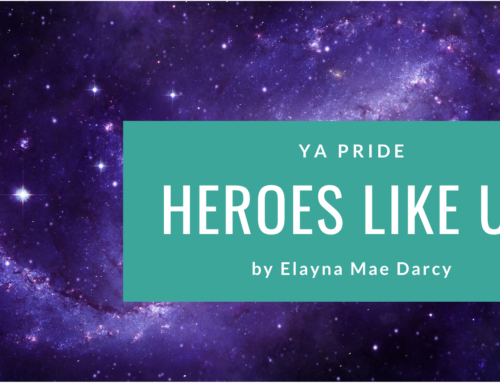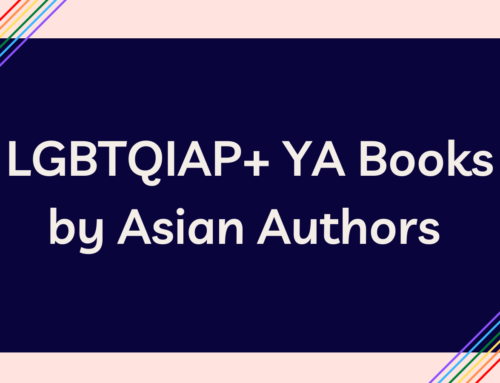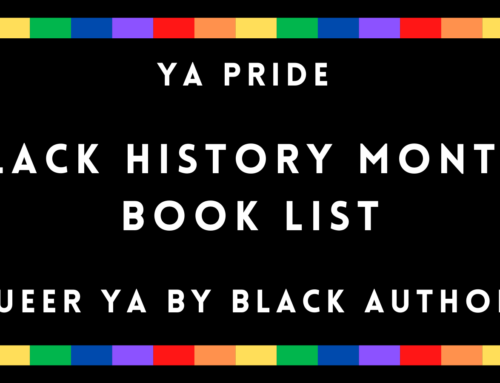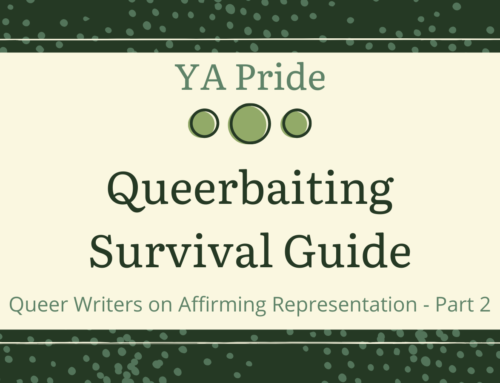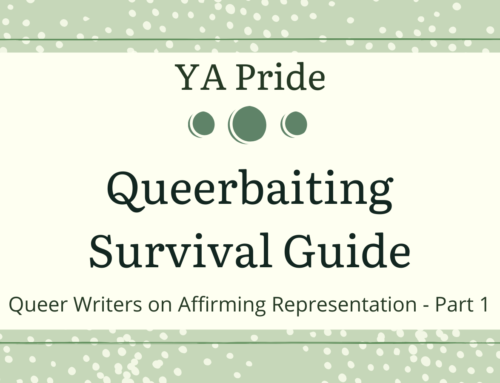by Anna-Marie McLemore
Sex-on-the-page. Doesn’t that sound like some kind of drink book lovers should come up with? Like sex-on-the-beach, but more bookish. (Paging Dahlia Adler, because I think she would have some ideas about what should go in this.)
The fact that I’m talking about drink recipes probably gives away the fact that I’m a little uncomfortable with what I’m gonna talk about right now. But I’m gonna do it anyway.
For anyone who doesn’t know, I’m a queer girl of color, and I’m married to a transgender guy I met as a teen, and who I refer to online (with his permission) as the Transboy. I’m in my twenties now, and as much as I may try to convince my parents that all the Transboy and I do behind closed doors is read Andrea Gibson poetry, I think you all can guess what we’ve been doing in the last decade. But when I came up against the question of whether to show on-the-page sex in my second novel, WHEN THE MOON WAS OURS, I did some of the finest hand-wringing of my writing career to date.
 That question—whether to depict sex between a queer girl character and a trans guy character—became a battleground for my own identity. I wrote those scenes. I took them out. I toned them down and put them back in. I tried to make them tamer. But in a moment of deleting them again, I asked myself: Why was I embarrassed about two characters falling in love the same way the Transboy and I had? Why was I ashamed of seeing this on the page, when it was what had passed between us when we were teens?
That question—whether to depict sex between a queer girl character and a trans guy character—became a battleground for my own identity. I wrote those scenes. I took them out. I toned them down and put them back in. I tried to make them tamer. But in a moment of deleting them again, I asked myself: Why was I embarrassed about two characters falling in love the same way the Transboy and I had? Why was I ashamed of seeing this on the page, when it was what had passed between us when we were teens?
If I thought these scenes were too much, too explicit, too “dirty” even, what was I saying about my own community? What was I saying about the boy I loved?
What was I saying about myself?
Was that really what I believed? That where heterosexual couples deserved detail and texture, we deserved fade-outs?
That was when I put those scenes back. If I’m proud of everything the Transboy is, if (on my good days), I’m proud of what I am, what was “dirty” about the kind of queer love we’ve shared since we were teens? What could be “dirty” about LGBTQ characters living in their own identities, falling in love, having safe, consensual sex?
Am I saying a book about LGBTQ characters has to contain and depict queer sex? Absolutely not, no more than I’d say that of books about heterosexual couples. But I had to go all in for MOON. I wanted to show a trans guy of color loving a queer girl of color, understanding the expectations society sets on both their bodies and identities. I wanted to show a queer girl loving a trans guy not because of what he is, not in spite of what he is, but for who he is. (Author Meredith Russo poignantly addresses themes of desire and identity from her perspective as a trans woman. If you haven’t already, go forth and check out IF I WAS YOUR GIRL and Meredith’s Twitter.) Though I never want to see trans characters depicted as objects, I did want to help make natural the idea of a girl desiring a trans guy, because that’s the love I live.
No two experiences of marginalization are the same, but there are parallels. The closest I can get to personally understanding how falling in love must have felt for the Transboy comes from my experience as a Latina girl. When anyone showed interest in me, there would always be that question, if they liked me because I was Latina, in spite of me being Latina, or if, maybe, they saw me for me. When I fell in love with the Transboy, I realized he saw me as who I was instead of just what I was. And he couldn’t let himself fall for me until he knew that I could acknowledge his transness but also respect that it was only one part of him.
The decisions I made in MOON came from a place of wanting to give my queer and trans characters what so many other characters already get. The space to be seen as desirable while also having desires of their own.
As Vee wrote about last fall, transgender characters should not exist as vehicles for the growth of cisgender characters. When the kinds of narratives Vee cautions against emerge, I think it’s often because these stories see characters only for their transness. They’re viewed as belonging to cis characters. The cis characters—who, as Vee mentions, are centered in the story—get to judge them as being worthy of being loved (or not). They get to declare them as resources to learn from (or not). As important as it is to acknowledge transness, if that’s all we’re acknowledging, we fail to see the person. And in doing that, we fail to see anything but our own opinion of their identity. Trans characters should never be reduced to this, to becoming moments of insight.
The Transboy started out as my crush. He became my fiancé, then my husband. But one thing he never became was my learning experience. Sure, the Transboy has taught me a lot since we met as teens. But if I’d approached him as a learning experience, I never would’ve learned anything.
In WHEN THE MOON WAS OURS, Miel and Sam understand a lot about each other, from the oddness their town assigns to them, to their lives as people of color (Miel is Latina, Sam is South Asian). But Miel is far from a perfect friend to Sam. She fucks it up sometimes. Sometimes she pushes him too hard for answers he’s not ready to give, and he responds by doing the same to her. But they know each other. Before either is an object of the other’s desire, they know each other.
This is how I love the Transboy. Yes, I fuck it up sometimes, but I love him as who he is, not what he is.
In her powerful essay “Who Can Tell My Story?”, Jacqueline Woodson addresses a question she’s been asked many times: “How do you feel about people writing outside of their own experiences?” And she does it brilliantly by raising another question: Have these writers, who either have written or who want to write outside their own experience, been in the houses of those they want to write about? Do they know them enough to be writing them?
Woodson’s illustration—both the literal houses of our grandmothers, our families, and also the figurative houses of our communities—has stayed with me, resonating with my experience as a queer woman of color. And when I think about the question I came to writing MOON, her illustration comes back even more sharply. When I was so resistant to showing these characters acting on their love, what did that say about what I thought of my own house? What had I let the world tell me about my own house?
This—my identity as a queer woman of color, my heart that loves a trans guy—this is my house. This is who I am, and this is who I love. I will not draw the curtains. I will not turn off the lights. I will not let anyone decide the love that lives here is too dirty to be seen.
If I had decided that my own queer characters were not allowed to have sex on the page, it would have meant drawing the shades and turning out the lights on them, and on me and the Transboy. It would have meant deciding that the love I live every day deserves to exist only in the dark, behind heavy curtains.
This is my house. This is the love that lives here. And I will open the windows and let the light in, even, especially, when that means being seen.
—

Anna-Marie McLemore was born in the foothills of the San Gabriel Mountains, raised in the same town as the world’s largest wisteria vine, and taught by her family to hear la llorona in the Santa Ana winds. Her debut novel, THE WEIGHT OF FEATHERS (out now from Thomas Dunne Books/St. Martin’s Press), was a Junior Library Guild Selection, named to YALSA’s Best Fiction for Young Adults, and a finalist for the William C. Morris Debut Award. Her second novel, WHEN THE MOON WAS OURS, will be released on October 4, 2016, and WILD BEAUTY is forthcoming in 2017. You can find Anna-Marie at annamariemclemore.com or on Twitter @LaAnnaMarie.
